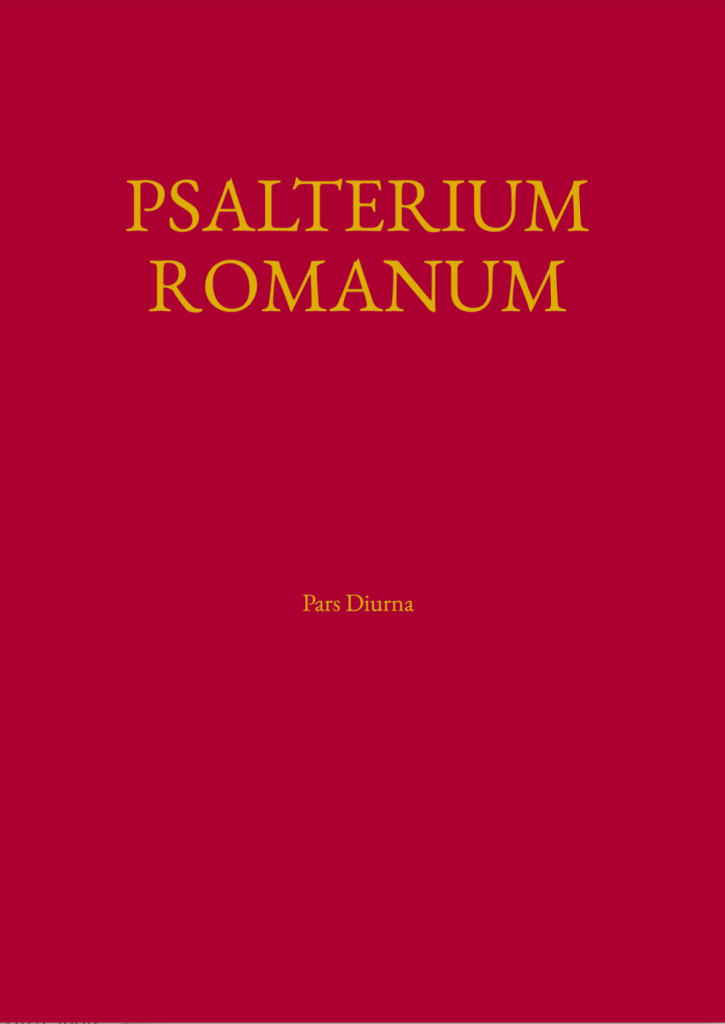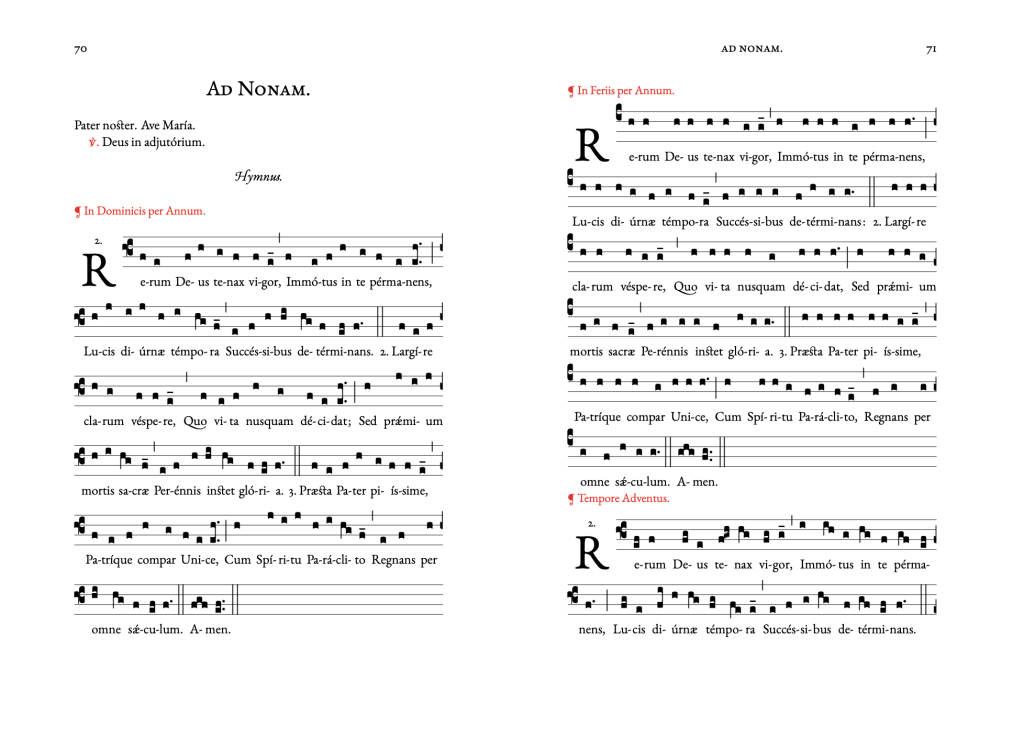
Pope Saint Pius X’s reform of the Roman Office did not only represent an upheaval in the psalter, but also unaccountably changed several of the antiphons of the ferial cursus, replacing them with novel compositions even when the traditional ones could have continued to be used. One laments, for instance, the disappearance of the antiphons Fidelia for psalm 110, In mandatis for psalm 111, and Nos qui vivimus for psalm 113 at Sunday Vespers, which was only allowed to keep two of its ancient antiphons, and of the antiphon Quoniam in aeternum which so excellently fits the recitation of psalm 135 at Thursday Vespers. The joyful repetitions of the cry ‘alleluia’ at the minor hours on Sundays, and at Lauds during Eastertide—especially the exuberant nine-fold alleluia for the Laudate psalms—seem to have struck the reformers as unbearable, and those antiphons were replaced with new ones which incorporated psalm verses for which the alleluias serve as parentheses. These mutations ensured that the Roman antiphonal produced by Solesmes and approved by the Vatican in 1912 cannot be used to sing the ancient Office, even if one were to disregard the revolutionary arrangement of the psalms.
The editors of Canticum Salomonis are glad therefore to announce the publication of the pars diurna of the traditional Psalterium Romanum, complete with musical notation for all the old antiphons, responsories, and pre-Urban VIII hymns. This volume contains the entire ferial Office for Lauds, Prime, Tierce, Sext, Nones, Vespers, and Compline, including the seasonal antiphons, responsories, and hymns for Advent, Lent, Passiontide, and Eastertide. It also includes the collects for Sundays per annum, making it a self-sufficient resource for singing the ferial office on most days. On the other hand, the proper antiphons for Saturdays and Sundays and for penitential ferias are not included, since they were untouched by the Piodecimal reforms and recourse can thus be had to the Solesmes books.

The musical notation has been taken principally from the second volume of the new Antiphonale monasticum, published in 2006, which follows better principles of restoration than earlier editions; the episemas, however, have been included, and some antiphon restitutions are new. The hymns have been taken from the 1934 Antiphonale monasticum; they are musically identical to those printed in the 1983 Liber hymnarius. A Toni communes section includes the ‘archaic’ C and D tones found in the 2006 antiphonal for those who wish to employ them, but the standard tones are also given for the antiphons assigned these rather palæontological ones. Those who desire to follow the widespread mediæval custom of singing mediants over Hebrew or monosyllabic words in a manner reflecting their oxytone pronunciation can also find the requisite instructions in that section. The 1912 antiphonal suggests saying the ferial preces at Lauds and Vespers recto tono, but anyone who prefers to sing them will find the music for the Pater noster chanted by the hebdomadary in the Toni communes as well, taken from the 1934 Antiphonale monasticum.

We pray that this unique volume will aid the devotion of Catholics who wish to pray the Roman ferial Psalter as it was known to centuries of saints, and contribute to the authentic and informed liturgical restoration so felicitously underway across the Catholic world. Ante mori quam novitatibus consentire!

The book is available in both hard and softcover editions on the US, UK, Canadian, Spanish, French, Italian, German, Dutch, Polish, and Swedish Amazon stores (Australia and Japan soon).
The clef on the IVth tone example is wrong. Otherwise, very interesting job!
LikeLike
Ah yes… Despite hours of proofreading, it seems I’ve yet to stamp out all of Titivillus’s mischief
LikeLike